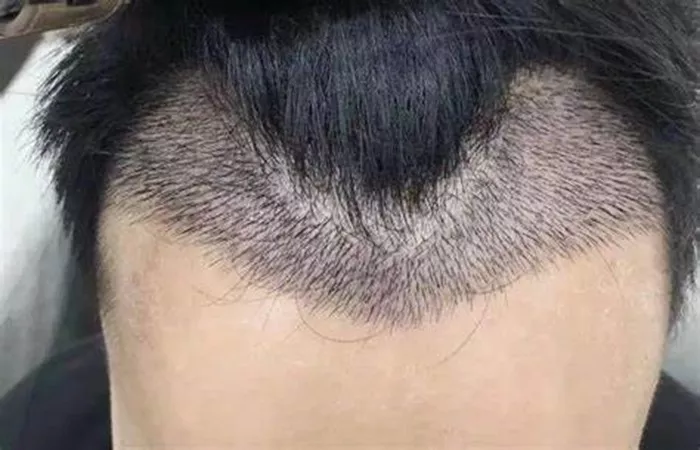Hair transplantation is a surgical procedure that involves relocating hair follicles from one part of the body to another, typically to address baldness or thinning hair. The success of the procedure largely depends on selecting the right donor area, where hair is resistant to balding and matches the natural growth pattern of the recipient site. Understanding the origin of transplanted hair is crucial for both patients and surgeons to achieve optimal results.This article explores the primary and secondary donor regions, the characteristics of ideal donor hair, and alternative sources for patients with limited traditional donor supply.
Primary Donor Area
The most common and preferred donor site for hair transplantation is the occipital scalp, located at the back of the head. This region is genetically resistant to dihydrotestosterone (DHT), the hormone responsible for male and female pattern baldness.
Why the Occipital Scalp Is Ideal
Hair follicles in the occipital zone maintain their growth cycle even when other areas thin over time. Surgeons extract follicular unit grafts from this region because they provide natural-looking results when transplanted to the frontal or crown areas. The density and angle of hair growth in the occipital scalp blend seamlessly with existing hair, ensuring an undetectable transition.
Additionally, the occipital scalp offers a high number of follicular units per square centimeter, making it a reliable source for large transplant sessions. The scarring from extraction is minimal, especially with modern techniques like Follicular Unit Extraction .
Secondary Donor Areas
For patients with insufficient donor hair in the occipital region, surgeons may consider secondary donor sites. These areas are less commonly used but can provide additional grafts when needed.
Temporal and Parietal Regions
The sides of the head, known as the temporal and parietal regions, also contain DHT-resistant hair. While not as dense as the occipital scalp, these areas can supplement graft counts in extensive procedures. The hair here tends to be finer, which is beneficial for creating a softer hairline.
Beard and Body Hair
In cases of advanced baldness, beard and body hair can serve as alternative donor sources. Beard hair, in particular, is thick and robust, making it suitable for adding density in the mid-scalp and crown. Body hair from the chest, arms, or legs is finer and may be used sparingly to enhance overall coverage.
However, body hair transplantation requires careful planning, as the growth cycle and texture differ from scalp hair. Surgeons must strategically place these grafts to ensure a natural appearance.
Characteristics of Ideal Donor Hair
Not all hair is suitable for transplantation. The best donor hair shares specific traits that contribute to long-term success.
Permanent Hair Follicles
The most critical factor is DHT resistance. Hair follicles that are not affected by androgenetic alopecia will continue to grow after transplantation, ensuring lasting results.
Matching Texture and Curl Pattern
Donor hair should closely resemble the recipient area’s natural hair in terms of thickness, curl, and color. Mismatched textures can lead to an unnatural look, so surgeons carefully select grafts that blend well.
High Follicular Unit Density
Areas with a high concentration of follicular units yield more grafts per session, reducing the need for multiple procedures. The occipital scalp typically provides the highest density, making it the first choice for most patients.
Hair Transplant Techniques and Donor Harvesting
The method of extracting donor hair significantly impacts the outcome and healing process. Two primary techniques are used today.
Follicular Unit Transplantation
FUT involves removing a strip of skin from the donor area, typically the occipital scalp, and dissecting it into individual follicular units. This method allows for the extraction of a large number of grafts in a single session.
While effective, FUT leaves a linear scar, which may be visible with very short haircuts. However, skilled surgeons minimize scarring by using precise closure techniques.
Follicular Unit Extraction
FUE is a scarless method where individual follicular units are extracted directly from the scalp using a micro-punch tool. This technique is ideal for patients who prefer shorter hairstyles, as it does not leave a linear scar.
FUE is more time-consuming than FUT and may not be suitable for patients requiring a high number of grafts in one session. However, advancements in robotic FUE have improved precision and efficiency.
Challenges in Donor Hair Selection
Despite advancements in hair transplantation, certain challenges persist when selecting donor hair.
Limited Donor Supply in Advanced Baldness
Patients with extensive hair loss may not have enough DHT-resistant hair to achieve full coverage. In such cases, combining scalp, beard, and body hair can maximize graft availability.
Variable Hair Quality
Body and beard hair have different growth cycles and textures, requiring expert placement to ensure a natural look. Surgeons must carefully assess each patient’s donor hair characteristics before planning the procedure.
Ethnic Variations in Hair Characteristics
Hair density, curl pattern, and thickness vary among ethnic groups, influencing graft selection and placement strategies. Surgeons must tailor their approach to match the patient’s natural hair characteristics.
Conclusion
The success of a hair transplant relies heavily on selecting the right donor hair. The occipital scalp remains the gold standard due to its DHT resistance and high follicular density. However, secondary donor areas such as the temporal scalp, beard, and body hair can provide additional grafts for patients with limited traditional donor supply.Advancements in extraction techniques, such as FUE and robotic-assisted harvesting, have improved precision and reduced scarring. By carefully evaluating donor hair quality and employing strategic placement, surgeons can achieve natural, long-lasting results for patients experiencing hair loss.Understanding where transplanted hair comes from helps set realistic expectations and ensures the best possible outcome for those considering hair restoration.
Related Topics

